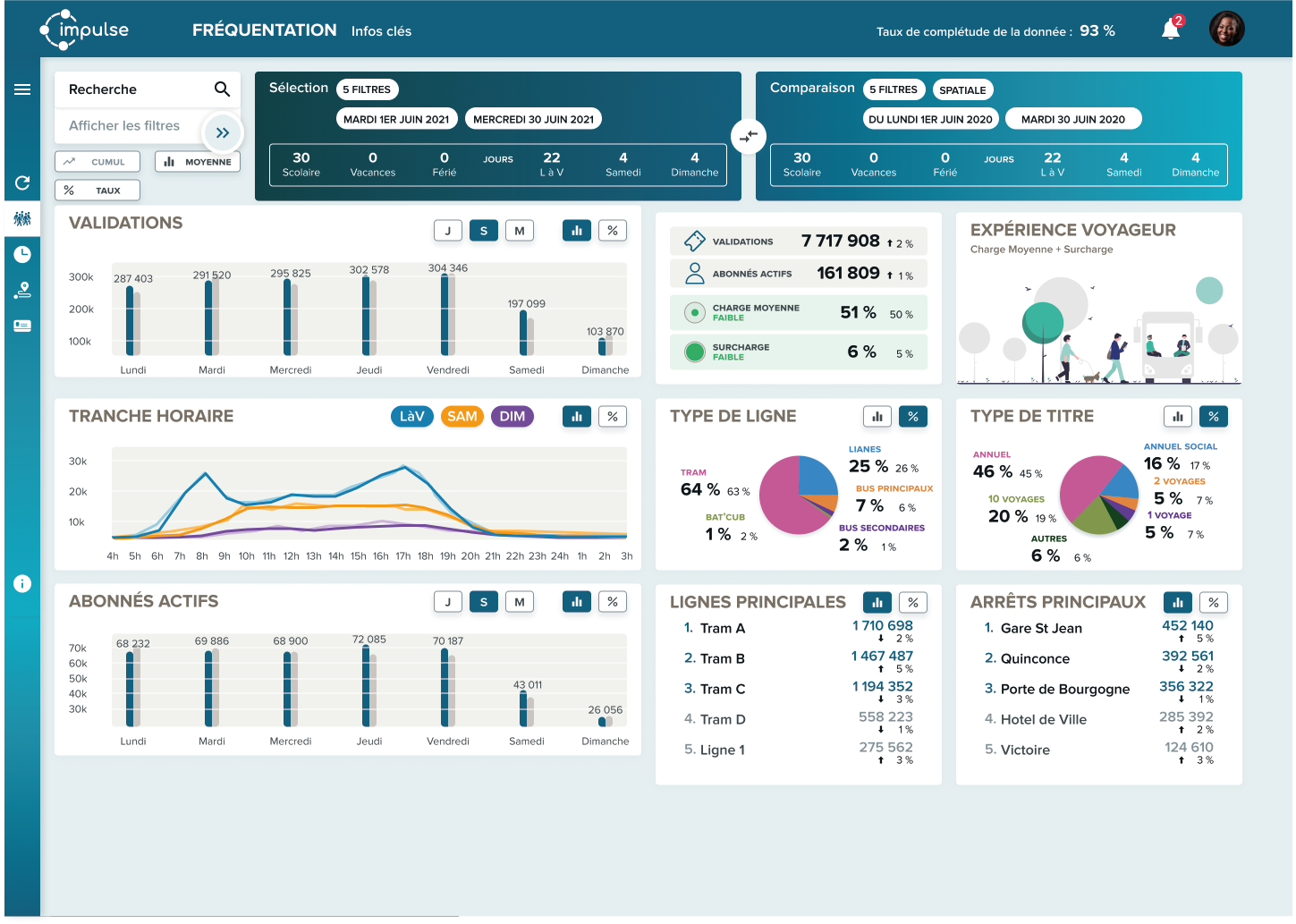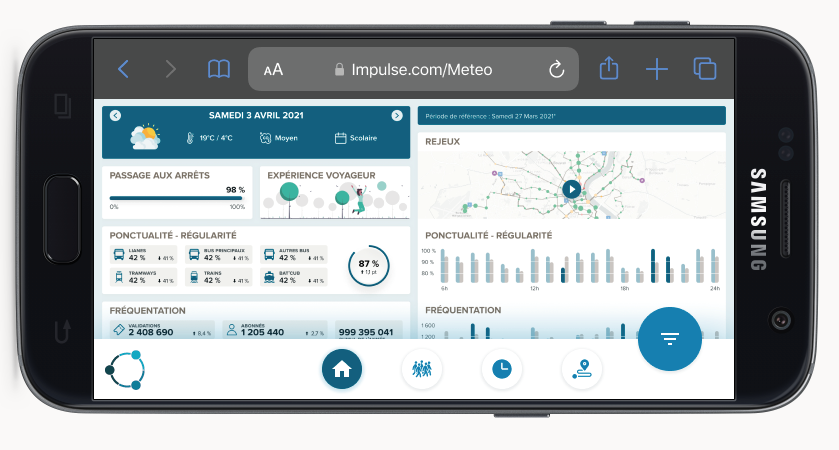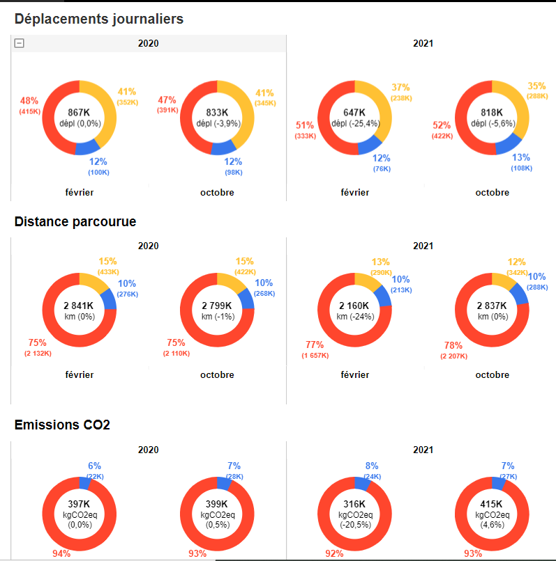Innovation: harnessing data to improve multimodal and shared mobility
Using data enables Keolis to offer its passengers and mobility authority customers the most suitable transit solutions, notably by having a comprehensive vision of transit networks. Sharing data also allows Keolis to strengthen its partnership with the mobility authorities and to make necessary decisions together with them for the smooth operation of the networks.
Keolis, in partnership with mobility authorities, has co-developed two complementary and innovative tools.
The first, Patterns, uses GPS data from mobile phones and connected objects. This anonymous and GDPR-compliant use of data allows the company to understand mobility dynamics. Combined with enrichment algorithms, it reconstructs every stage in a multimodal journey by specifying the modes of transport used, customer types or variations in travel habits.
The second, Impulse, combines Keolis' dual expertise in mobility and data, by harnessing data from several operating systems, including third-party data, such as city or weather data, for a more thorough analysis. Its user-friendly interface provides an overview of performance indicators for the entire transit network: ridership, stop frequency, punctuality, quality of service, etc. Impulse also allows elected officials, managers, and technicians of Keolis and mobility authorities to better evaluate the network across three levels:
- The network's weather forecast for one day
- An overview of the network by theme (ridership, punctuality, etc.),
- A comprehensive view of network indicators (ticket validations, vehicle occupancy, subscriber type, etc.) that enable a detailed analysis for each transit line, stop or route.
Finally, Impulse also provides an "expert" mode that allows the user to filter the network analysis by mode of transport, line, or passenger profile.



